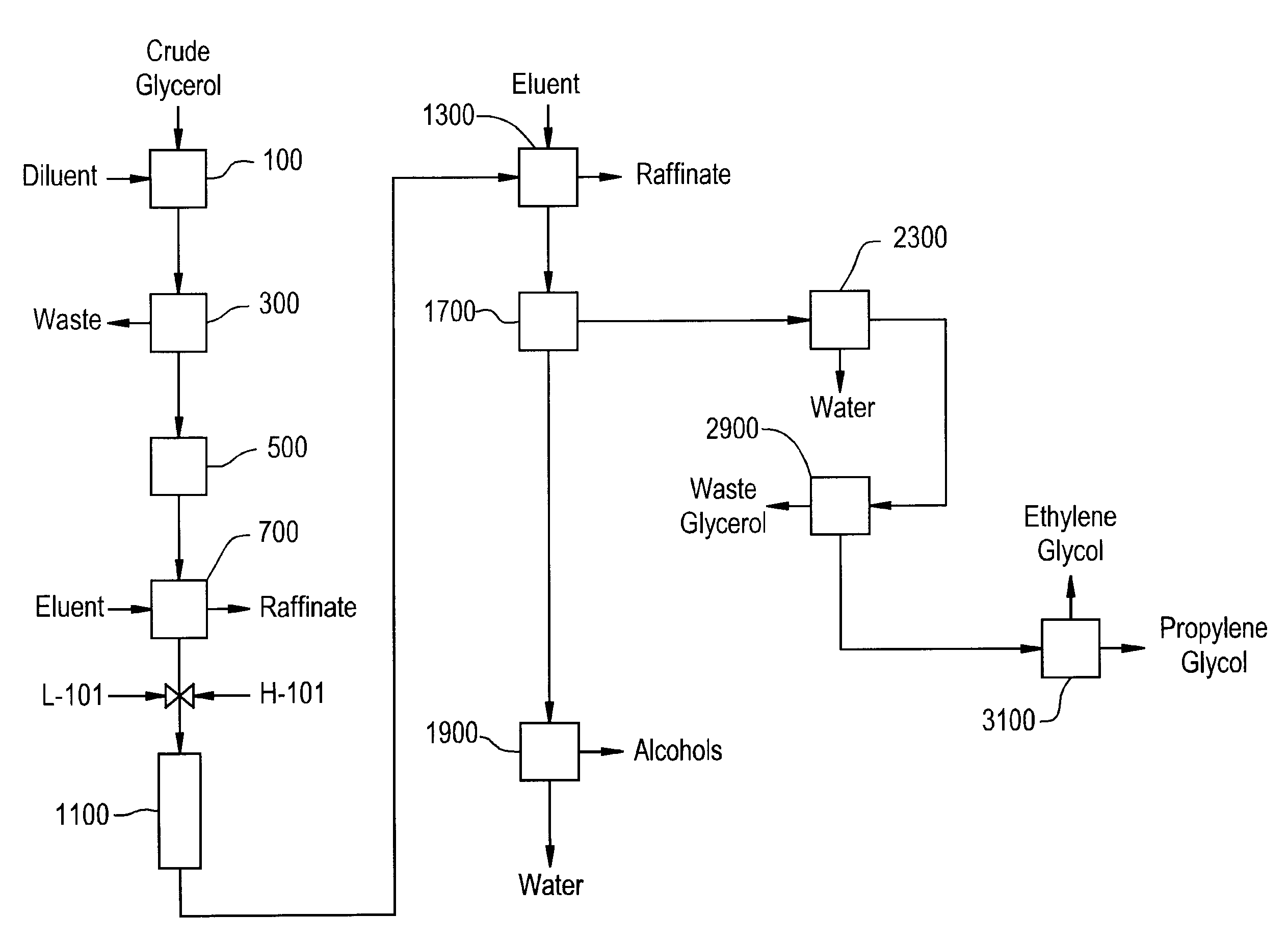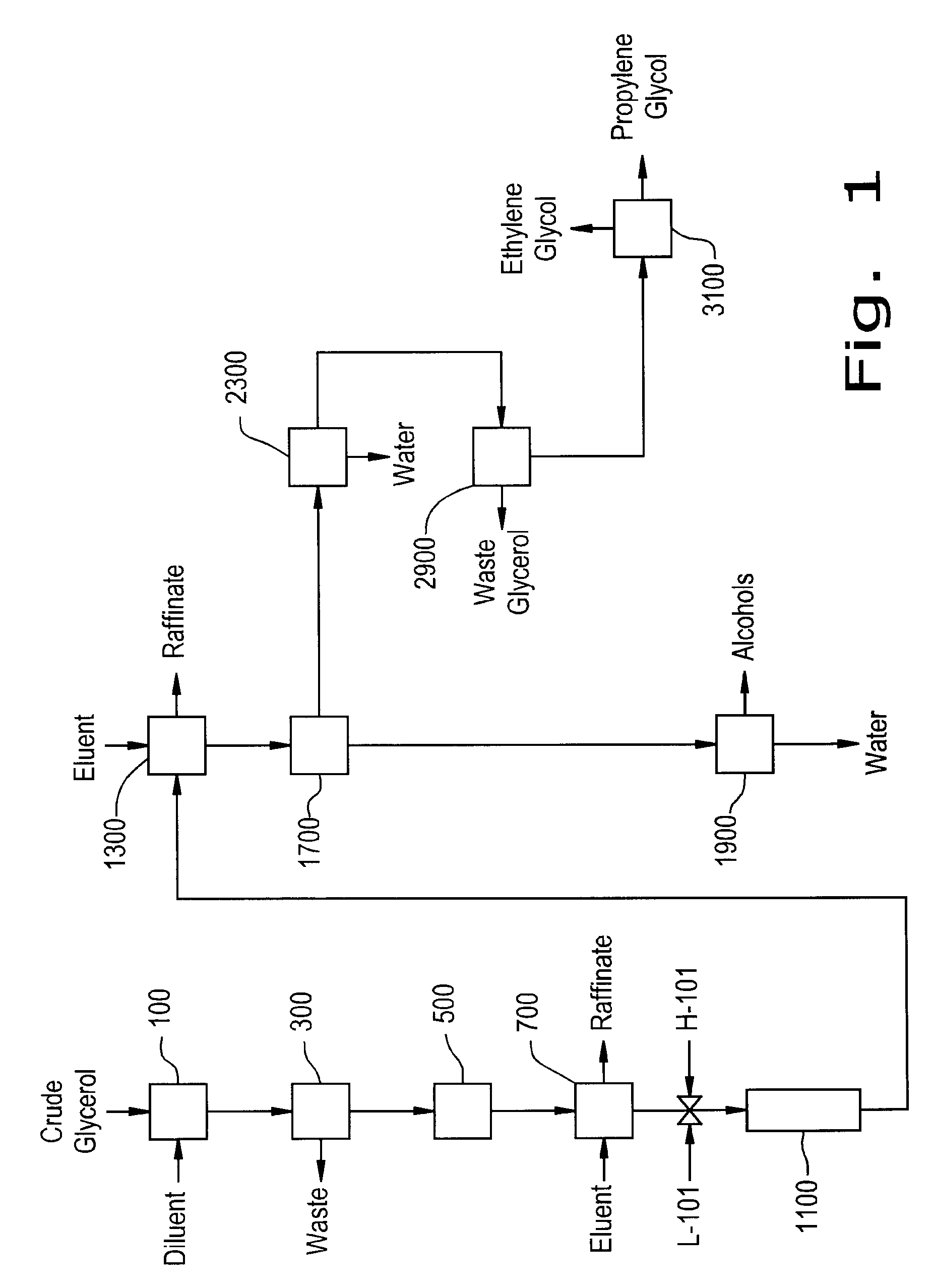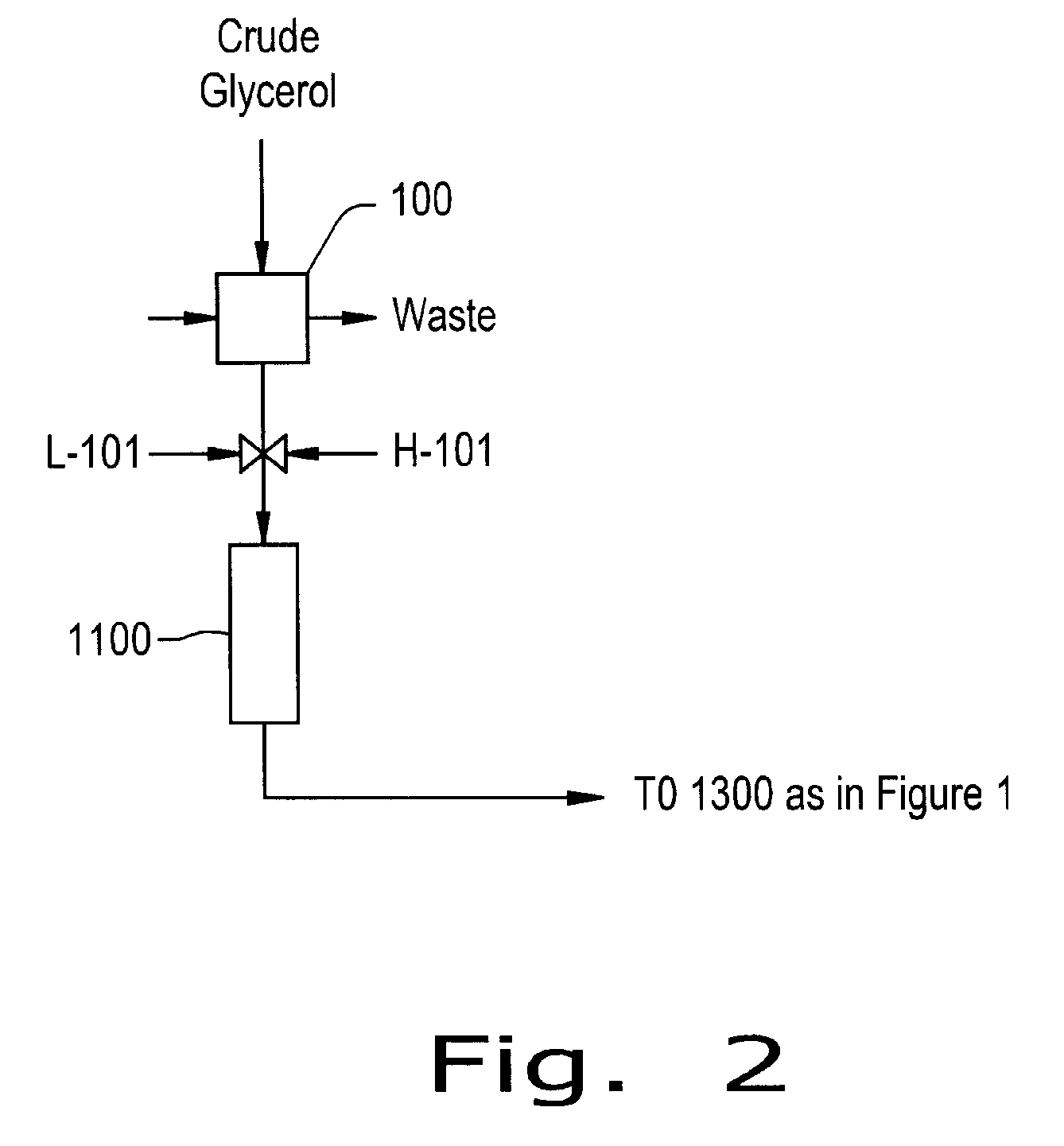Preparation of Derivative of Polyhydric Alcohols
a technology of polyhydric alcohol and derivative, which is applied in the direction of liquid chemical processes, gas-gas reaction processes, liquid-gas reactions of thin-film type, etc., can solve the problems of increasing production costs, poor selectivity, and dilution of glycerol feedstock
- Summary
- Abstract
- Description
- Claims
- Application Information
AI Technical Summary
Problems solved by technology
Method used
Image
Examples
example 1
[0065]A feed stream (Table 1, Column labeled 1) containing 98% hydrogen and 2% impurities was treated with a PDMS based hydrophobic dense gas separation membrane as depicted in FIG. 11. The hydrogen feed stream was allowed to go through the membrane, which retained the impurities. A permeate stream (Table 1, Column labeled 4) containing 99.29% pure hydrogen was recovered with over 86.6% yield and a pressure drop of only 1.57%. This hydrogen was suitable for use in reactions of the present disclosure. A retentate stream enriched in impurities was obtained (Table 1, Column labeled 5).
example 2
[0066]A feed stream (Table 2, Column labeled 1) containing 98% hydrogen and 2% impurities was treated with a polymer based reverse-selective dense gas separation membrane (hydrogen rejecting membrane) as depicted in FIG. 12. Impurities passed go through the membrane as a permeate stream (Table 2, Column labeled 4). A retentate stream (Table 2, Column labeled 5) containing 98.6% pure hydrogen was retained and recovered with over 63.34% yield and a pressure drop of only 4.33%. This hydrogen was suitable for use in reactions of the present disclosure.
example 3
[0067]A series of studies were conducted in a 2000 ml high-pressure Stainless Steel 316 reactor. As described in FIG. 10, a solid catalyst was loaded in the reactor to a final volume of 1000 ml of catalyst. The reactor was jacketed with a hot oil bath to provide for the elevated temperature for reactions and the feed and hydrogen lines were also preheated to the reactor temperature. A solution of pure glycerol was fed through the catalyst bed at LHSV ranging from 0.5 hr−1 to 2.5 hr−1. Hydrogen was supplied at 1200-1600 psi and was also re-circulated through the reactor at a hydrogen to glycerol feed molar ratio of 1:1 to 10:1, such as at 5:1.
[0068]Table 4 describes the results with hydrogenolysis of 40% USP grade glycerol feed. Between 47.7-96.4% of the three-carbon compound glycerol was converted and between 36.3-55.4% of the three-carbon compound propylene glycol was recovered. In addition to propylene glycol, the reaction product contained 0.04-2.31% of the four-carbon butanediol...
PUM
| Property | Measurement | Unit |
|---|---|---|
| Fraction | aaaaa | aaaaa |
| Fraction | aaaaa | aaaaa |
| Fraction | aaaaa | aaaaa |
Abstract
Description
Claims
Application Information
 Login to View More
Login to View More - R&D
- Intellectual Property
- Life Sciences
- Materials
- Tech Scout
- Unparalleled Data Quality
- Higher Quality Content
- 60% Fewer Hallucinations
Browse by: Latest US Patents, China's latest patents, Technical Efficacy Thesaurus, Application Domain, Technology Topic, Popular Technical Reports.
© 2025 PatSnap. All rights reserved.Legal|Privacy policy|Modern Slavery Act Transparency Statement|Sitemap|About US| Contact US: help@patsnap.com



